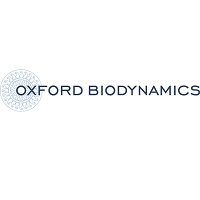Christian Hoyer Millar, Chief Executive Officer of Oxford BioDynamics Plc, added:
“On behalf of the Board, I would like to thank David for his support and significant contribution to Oxford BioDynamics since joining the Board in 2016. David’s input, as we have transitioned from a privately held company into a successful, growing AIM listed biotech, has proved invaluable. I would also like to thank Alison for her long service and valuable contributions over a period which has been transformational for the Company. Alison has made an invaluable contribution to the Company from the very first spin out from the University of Oxford.”
Oxford BioDynamics Plc (LON: OBD), a biotechnology company focused on the discovery and development of epigenetic biomarkers based on regulatory genome architecture, for use within the pharmaceutical and biotechnology industry, today announced that David Williams, Non-Executive Chairman, has indicated to the Board his desire to step down from his position following the Company’s AGM in March 2019.
The Board has also been informed that Alison Kibble, Non-Executive Director, intends to step down from her role during the course of 2019, after over 11 years of service. Alison was appointed to OBD’s Board as a Non-Executive Director in December 2007.
David and Alison will each continue in their respective role until the appointment of their replacement and will work closely with the Board to ensure a smooth transition. The Board has commenced the process of identifying successor independent non-executives and will update the market in due course.
David Williams, Chairman of Oxford BioDynamics, said:
“It has been a pleasure to work with the Board and management team to serve shareholders as Oxford BioDynamics has transitioned to become a listed business. The Company has grown significantly since its IPO in December 2016, increasing its international footprint, its portfolio of intellectual property, and the range of global pharma and biopharma companies on its roster. Now is the right time for me to step down, as the Company enters the next phase of growth. I am confident that the Company will continue to go from strength to strength.”

